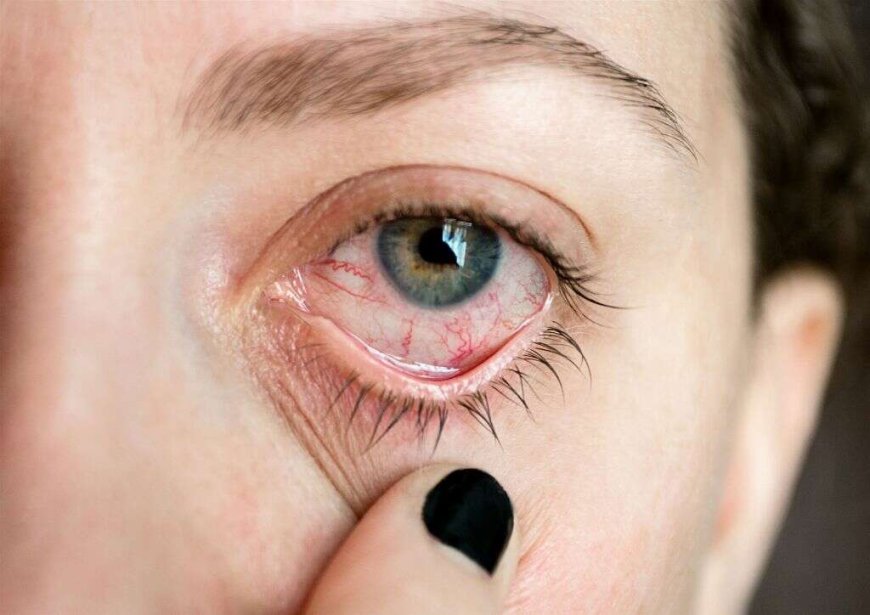Uveitis

Introduction:
Imagine your eyes are like windows to your soul, and behind those windows lies a beautiful and delicate world. Now, what if I told you that there is an unseen enemy that can sneak into your eyes, causing trouble and making it difficult to see clearly? That enemy is Uveitis, a rare but serious eye condition that affects many people, including some in our own country, India. Today, we will explore what Uveitis is, how it can be classified, its causes, symptoms, types, diagnostic tests, treatments, and even ways to prevent it.
What is Uveitis?
Uveitis is an eye condition that affects a part of our eyes called the uvea. The uvea is like a protective layer that surrounds the eye's lens, iris (the colored part), and retina (the part that captures images). When this protective layer becomes inflamed or swollen, it causes Uveitis. The inflammation can be harmful and may lead to vision problems if not treated promptly.
Signs and Symptoms:
Now, how do you know if someone has Uveitis? Well, there are some signs and symptoms that can give it away. A person with Uveitis may experience:
- Eye redness
- Blurred vision
- Eye pain
- Sensitivity to light (ouch, bright lights hurt!)
- Seeing floaters (tiny spots or lines that seem to move around)
If you notice these symptoms in yourself or someone else, it's essential to see an eye doctor right away.
How Is Uveitis Classified?
Uveitis can be classified based on which part of the uvea is affected. There are three types of Uveitis:
-
Anterior Uveitis: When the front part of the uvea is inflamed. This is the most common type and may be caused by infections or autoimmune conditions.
-
Intermediate Uveitis: When the middle part of the uvea is inflamed. This type is often seen in children and young adults and may be related to diseases like sarcoidosis.
-
Posterior Uveitis: When the back part of the uvea is inflamed. This type can be more severe and may affect the retina, causing vision problems.
Causes and Triggers:
Now, let's talk about what causes Uveitis. Sometimes, the exact cause remains a mystery, but there are some triggers that can lead to this condition:
-
Infections: Viruses, bacteria, or other germs can sneak into the eyes and trigger Uveitis.
-
Autoimmune Conditions: Sometimes, our immune system can get confused and attack our own body, including the eyes.
-
Injuries: Eye injuries can also lead to Uveitis.
Risk Factors with Examples:
Certain things can increase the chances of getting Uveitis. Here are some risk factors with examples:
-
Age: Uveitis can affect people of all ages, but some types, like intermediate Uveitis, are more common in younger individuals.
-
Family History: If someone in your family had Uveitis, you might have a higher risk too.
-
Underlying Health Conditions: Conditions like arthritis or inflammatory bowel disease can increase the risk of Uveitis.
-
Infections: Living in areas where certain infections are common can increase the risk.
Types of Uveitis with Detailing for Each Type:
As we mentioned earlier, there are three types of Uveitis: Anterior, Intermediate, and Posterior. Let's learn more about each type:
-
Anterior Uveitis:
- This type affects the front part of the uvea, including the iris and ciliary body.
- It can cause eye redness, pain, and sensitivity to light.
- Common causes include infections or autoimmune diseases.
-
Intermediate Uveitis:
- It affects the middle part of the uvea.
- Symptoms may include floaters and blurry vision.
- It can be linked to certain diseases like sarcoidosis.
-
Posterior Uveitis:
- This type affects the back part of the uvea, near the retina.
- It can cause severe vision problems and needs prompt treatment.
Diagnostic Tests and Their Uses:
To find out if someone has Uveitis, doctors use various tests. Let's explore some of them:
-
Eye Examination: Doctors use special instruments to look into the eye and check for signs of inflammation.
-
Visual Acuity Test: This test checks how well you can see with each eye.
-
Slit-Lamp Examination: A special lamp helps the doctor see the front part of the eye more clearly.
-
Ocular Ultrasound: This test uses sound waves to create images of the eye's structures, especially when the view is not clear.
-
Blood Tests: These help identify any infections or underlying conditions.
Treatments and Their Descriptions:
Treating Uveitis depends on its type and severity. Here are some common treatments:
-
Eye Drops: These are like medicines for the eyes and can reduce inflammation.
-
Oral Medications: Sometimes, doctors prescribe pills or tablets to control Uveitis.
-
Injected Medications: In some cases, special medicines are injected directly into the eye to help with inflammation.
-
Surgery: Rarely, surgery might be needed to remove inflamed tissue or repair eye damage.
Complications of Uveitis:
If left untreated, Uveitis can lead to complications such as:
- Glaucoma: Increased pressure in the eye that can damage the optic nerve.
- Cataracts: Clouding of the eye's lens, affecting vision.
- Retinal Damage: Inflammation can harm the retina and cause vision loss.
Prevention Techniques:
Although Uveitis cannot always be prevented, here are some tips to take care of your eyes and reduce the risk:
-
Wash Hands: Keeping your hands clean helps prevent infections.
-
Protect Your Eyes: Wear safety goggles during activities that could cause eye injuries.
-
Regular Eye Check-ups: Visit your eye doctor regularly for check-ups.
Uveitis might be a mysterious condition, but we now understand its signs, symptoms, types, causes, and how it can be treated. Remember to take good care of your eyes, and if you ever experience any eye problems, don't forget to tell your parents or visit an eye doctor. Our eyes are precious, and by learning about Uveitis, we can protect them and keep the world they show us bright and beautiful.
What's Your Reaction?
 Like
0
Like
0
 Dislike
0
Dislike
0
 Love
0
Love
0
 Funny
0
Funny
0
 Angry
0
Angry
0
 Sad
0
Sad
0
 Wow
0
Wow
0








































































